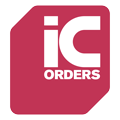Integrated circuits (ICs), often referred to as chips or microchips, are a cornerstone of modern electronic devices. These tiny components are the brains behind virtually every piece of technology we use today, from smartphones to satellites. This article delves into the world of IC components, exploring their function, types, and the process of their creation.
The Function of IC Components
At the most basic level, an IC is a set of electronic circuits on a small chip of semiconductor material, typically silicon. The integration of a large number of tiny transistors into a small chip was a huge breakthrough in the field of electronics, allowing for the miniaturisation of technology and the creation of complex devices.
ICs perform a variety of functions depending on their design. They can act as amplifiers, oscillators, timers, and computer memory, among other things. The versatility of ICs is one of the reasons they are found in such a wide range of devices.
Amplifiers
Amplifier ICs are used to increase the power of a signal. This is crucial in devices like televisions and radios, where the signal needs to be amplified to produce sound or images. Amplifier ICs can also be found in devices such as mobile phones and hearing aids.
Oscillators
Oscillator ICs generate an output signal without an input signal. They are used in a variety of applications, including generating radio waves for broadcasting and determining the clock speed of computers.
Types of IC Components
There are several different types of ICs, each with their own specific uses and characteristics. The most common types are digital, analog, and mixed signal ICs.
Digital ICs, also known as logic ICs, are used in devices that work on digital signals. They are found in computers, digital cameras, and many other devices. Analog ICs, on the other hand, are used in devices that process analog signals, such as radio and audio equipment.
Digital ICs
Digital ICs are designed to work with digital signals, which are signals that can only take on a limited number of values. These ICs are used in a variety of applications, including computers, digital cameras, and mobile phones.
Analog ICs
Analog ICs are designed to process analog signals, which are continuous signals that can take on any value within a certain range. These ICs are used in a variety of applications, including radio and audio equipment, and medical devices.
The Creation of IC Components
The process of creating IC components is complex and requires a high level of precision. It involves several steps, including design, fabrication, and packaging.
The design phase involves creating a circuit diagram that outlines the function of the IC. This is then translated into a physical design through a process called layout. The layout is then used to create a mask, which is used in the fabrication process.
Fabrication
The fabrication process involves creating the IC on a silicon wafer. This is done through a series of processes, including photolithography, etching, and ion implantation. The result is a wafer with thousands of identical ICs.
Packaging
Once the ICs have been created, they need to be packaged to protect them from damage and to allow them to be connected to other components. The packaging process involves attaching the IC to a package and connecting the IC’s terminals to the package’s pins.
Conclusion
IC components are a vital part of modern technology, enabling the creation of a wide range of electronic devices. By understanding the function, types, and creation process of these components, we can gain a deeper appreciation for the technology that surrounds us.
Now that you have a better understanding of IC components and their crucial role in today’s technology, you might be looking to source these integral parts for your projects. With over 12 years of experience in the electronic component market, IC Orders is your go-to independent distributor. Whether you’re facing opportunities or challenges, we are here to assist you in finding the exact part number you need and ensuring your Bill of Materials (BOM) is complete. Contact Us for A Quote Today and let us help you streamline your electronic component procurement process.
